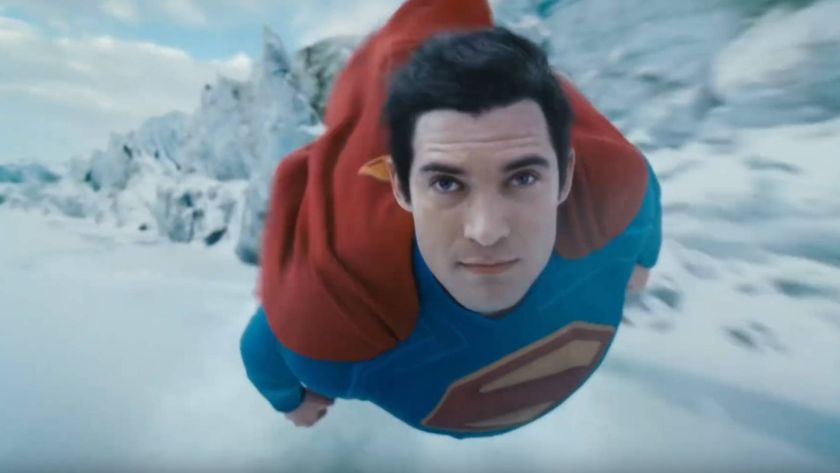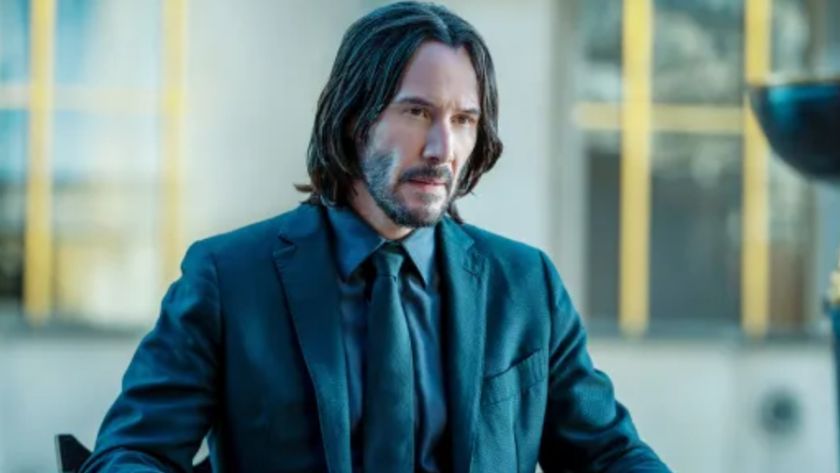50 Riskiest Movie Projects
Did cinema's biggest gambles pay off?
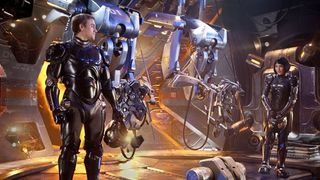
Pacific Rim (2013)
The Movie: Guillermo Del Toro unleashes the pitch of the year - giant robots vs giant monsters.
The Risk: How risky can this be? Well, with a $200+ million investment to recoup, an unstarry cast (Charlie Hunnam, Rinko Kikuchi, Idris Elba) and Del Toro doing a U-turn on 3D post-conversion, there are a lot of unknowns here.
Did It Pay Off?: A recent test screening reported off the scale, with Looper director Rian Johnson amongst those declaring it to be a hit. "Go into Pacific Rim prepared to be transmogrified into a 12 year old. And then to pee your pants with joy. I love it so much," Johnson tweeted.
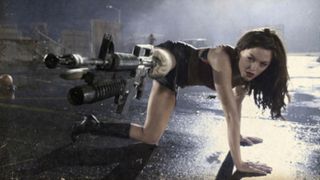
Grindhouse (2007)
The Movie: Robert Rodriguez and Quentin Tarantino resurrect the inglourious days of fleapit drive-in cinema with a double bill of horror ( Planet Terror ) and action ( Death Proof ).
The Risk: Would multiplex audiences get the concept of a deliberately shoddy homage to 1970s exploitation? With the film running at over three hours (including spoof trailers from Eli Roth and Edgar Wright), there was always a danger that the kids would walk out after Rodriguez's half, none the wiser.
Did It Pay Off?: A rare flop for Tarantino and distributor Harvey Weinstein, the film's event status fell even further when overseas distributors released the two films separately.
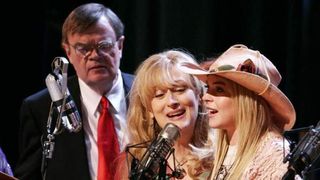
A Prairie Home Companion (2006)
The Movie: Robert Altman's last film adapted Garrison Keillor's famous radio show with a typically Altmanesque, all-star cast including Meryl Streep and Tommy Lee Jones.
The Risk: With Altman in his 80s, insurers would only underwrite the film if he could be shadowed by a back-up director - specifically, Altman's disciple and Magnolia director Paul Thomas Anderson, on hand throughout in case his mentor fell ill.
Did It Pay Off?: The film was duly finished and, for many critics, proved a fitting swansong. Anderson then went off and made his best film, There Will Be Blood .
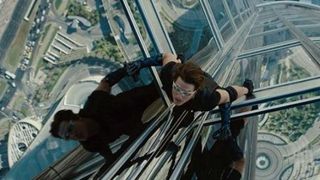
Mission: Impossible - Ghost Protocol (2011)
The Movie: The fourth in Tom Cruise's spy franchise sees the star getting a little too cocky about performing his own stunts.
The Risk: The Burj Khalifa tower in Dubai is, at 2,722 ft, the tallest man-made structure in the world. It is not somewhere you want your A-list movie star hanging out of without a stunt double, but that's exactly what Cruise insisted on doing.
Did It Pay Off?: Yes, yes, he was thoroughly protected with safety harnesses, but just try watching the sequence without your heart jumping into your mouth.

The Girl With The Dragon Tattoo (2011)
The Movie: David Fincher's adaptation of Stieg Larsson's Swedish crime smash, already filmed to great acclaim in its home country by Niels Arden Oplev.
The Risk: According to the Fireman's Fund List - chosen by Hollywood's most prolific insurance underwriter - Fincher's film was the riskiest film of 2011 to insure thanks to its motorcycle stunts, torture scenes and extensive overseas shoot.
Did It Pay Off?: Well, the film was released without anybody having to make an insurance claim. It's not too shabby to watch, either.
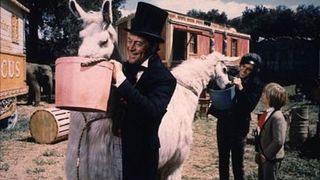
Doctor Doolittle (1967)
The Movie: Hollywood's big hope for 1967- a musical epic starring Rex Harrison as the eponymous physician, who talks to the animals.
The Risk: Never work with animals or Rex Harrison - if the irascible, boozy star wasn't causing trouble, his co-stars had to be left in Hollywood when nobody bothered to arrange quarantine prior to shooting in England.
Did It Pay Off?: Er, no. As Mark Harris' book Scenes From A Revolution makes clear, the film was a financial and artistic disaster from the start.
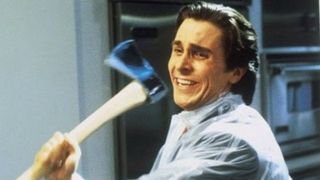
American Psycho (2000)
The Movie: Mary Harron's icy adaptation of Bret Easton Ellis' shocker, starring Christian Bale as yuppie slasher Patrick Bateman.
The Risk: The source remains one of the most violent books ever published. Even with women writing and directing, many wondered if Bateman's hardcore misogyny could ever be filmed?
Did It Pay Off?: Harron wisely curbed the novel's excesses to locate the acidic black comedy that often got lost amidst Ellis' deadpan descriptions of horrendous violence.
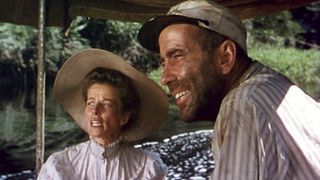
The African Queen (1951)
The Movie: John Huston took Katharine Hepburn and Humphrey Bogart to Africa to film the romantic adventure about a missionary and a cantankerous boat captain.
The Risk: Hollywood casts and crew weren't used to filming overseas; Bogart only escaped a dodgy tum by drinking whiskey instead of water. Meanwhile, if the Clint Eastwood film White Hunter, Black Heart is to be trusted, Huston spent the shoot trying to hunt an elephant.
Did It Pay Off?: Bogart - possibly because he avoided falling ill - won Best Actor, and the film is today a classic of its genre.
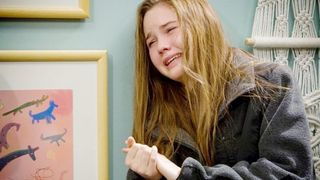
Trust (2010)
The Movie: David Schwimmer directs Clive Owen and Catherine Keener as parents of a 14-year old daughter who, unknown to them, is being groomed by an Internet paedophile.
The Risk: All paedophile films ( Hard Candy , The Woodsman ) are commercial suicide, but this one is of unusual interest because the director is Ross from Friends .
Did It Pay Off?: Unsurprisingly, the film didn't dent the box office, but it did the job of breaking Schwimmer free from post- Friends typecasting.
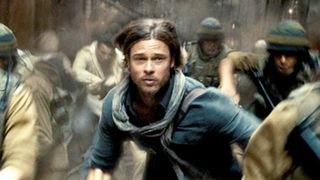
World War Z (2013)
The Movie: Based on Max Brooks' ambitious, experimental novel about a zombie apocalypse, Brad Pitt plays a U.N. official traversing the globe to find a solution.
The Risk: Pre-shoot buzz had this pegged as a zombie movie with Best Picture potential. And then the reshoots started, with the entire final act apparently being rewritten and the Oscar-courting release date of December 2012 pushed back to the 2013 blockbuster season.
Did It Pay Off?: At the moment, it's unclear what kind of film this will be, but we'll know for sure when it's released in the Summer.
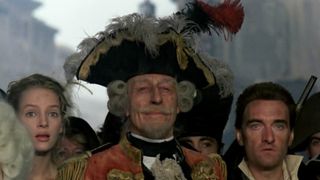
The Adventures Of Baron Munchhausen (1988)
The Movie: Terry Gilliam, a visionary filmmaker with no truck for screen realism, finds possibly his perfect material in notorious fantasist Munchhausen. Cue tall tales about trips to the moon and under the sea.
The Risk: Hollywood was probably mad to entrust Gilliam with an epic adventure, especially when he cast stage actor John Neville in the title role. But, arguably, the greater risk was Gilliam's after the way Hollywood treated him over Brazil .
Did It Pay Off?: Between a change of studio boss at Columbia and Gilliam's extravagance, the film failed to recoup its budget and ended a stormy decade for the director.

The Fountain (2006)
The Movie: Hugh Jackman and Rachel Weisz x 3, as Darren Aronofsky tells a tale of parallel lives in the past, present and future.
The Risk: What could possibly go wrong with a big-budget romance starring Brad Pitt and Cate Blanchett? Well, it doesn't bode well when the star walks out seven weeks before filming is due to begin. What we can see on-screen today is version 2.0, lower in budget and apparently missing several expensive set-pieces.
Did It Pay Off?: It depends who you ask - The Fountain is one of the most divisive films of recent times, with 51% approval on Rotten Tomatoes. One thing's for sure - if you cut your budget, you minimise your risk.
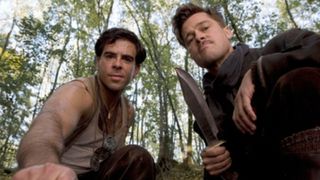
Inglourious Basterds (2009)
The Movie: Quentin Tarantino tackles WWII and decides that - history books be damned - Adolf Hitler was murdered by a crack squad of Nazi hunters.
The Risk: We all know that Hollywood isn't exactly accurate when it comes to facts. Even so, this is a fairly radical rewrite of real life.
Did It Pay Off?: Nobody really begrudged Tarantino his fanboy fantasies, given that it's probably a better ending than history offered.
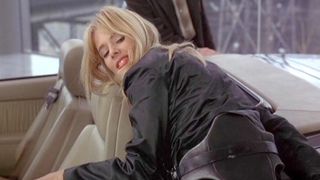
Crash (1996)
The Movie: J.G. Ballard's novel about the sex appeal of car crashes found a sympathetic director in David Cronenberg, but an entirely unsympathetic audience in Britain.
The Risk: "Ban this car crash sex film!" wailed the Daily Mail, fearful that every motorway accident would provoke an orgy. Westminster Council agreed, and refused to licence the film within its boundaries.
Did It Pay Off?: Frankly, even if the film wasn't excellent, it would have been worth Cronenberg making it just to gauge the depths of stupidity to which a censorious media will sink.
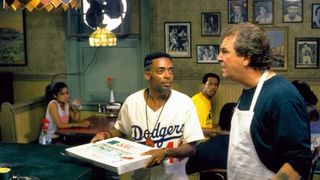
Do The Right Thing (1989)
The Movie: Spike Lee's daring portrayal of modern racism saw a New York's ethnic melting pot boil over on a riotous summer's day.
The Risk: Lee's confrontational style laid bare the abuse directed by - and at - just about every minority in America. Many reviewers feared it would spark real-life riots.
Did It Pay Off?: Acclaimed as one of the year's best films, it still proved too hot for the Academy, which chose Driving Miss Daisy . Posterity has told a different story about which film remains spikily relevant.
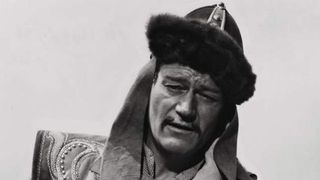
The Conqueror (1956)
The Movie: The 1950s Cinemascope overreaches itself by casting John Wayne as Genghis Khan.
The Risk: The casting alone would secure the film a place in this list. More worryingly, producer Howard Hughes made the decision to shoot in Utah, just downwind of a nuclear weapon testing site.
Did It Pay Off?: That the film flopped was a given. But worse was to follow when most of the film's principal cast - including Wayne - later died from cancer.
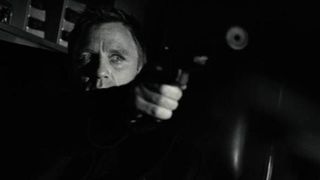
Casino Royale (2006)
The Movie: James Bond is rebooted. This time, 007 is the blond.
The Risk: Even after the debacle of Die Another Day , it was by no means a sure thing that audiences would take to a hard-edged, post-Bourne update of Britain's favourite film franchise. For some people, Daniel Craig's hair colour was reason enough to declare the end of the world.
Did It Pay Off?: Craig proved an instant smash and - barring second film wobbles - Skyfall 's billion-dollar take has confirmed that 007 is in safer hands than ever.
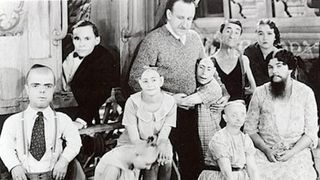
Freaks (1932)
The Movie: Tod Browning's mix of documentary and horror about a group of circus freaks (all played by real-life disabled performers) who are betrayed by a gold-digger.
The Risk: Browning was riding high after directing Dracula ; even so, MGM boss Irving Thalberg recognised that the director's methods were unusual and barred the casting of any major stars.
Did It Pay Off?: A notorious flop on release in the countries where it wasn't banned, today it's regarded as the most inventive (if politically incorrect) of classic Hollywood horrors.
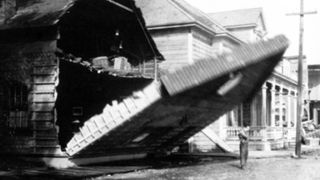
Steamboat Bill, Jr (1928)
The Movie: Buster Keaton's comedy about the son of a paddle steamer captain who has to save the day when his town is ravaged by a storm.
The Risk: The last of Keaton's independent films, it was nearly the last of Keaton himself, thanks to the ballsy stunt whereby a collapsing house-front narrowly avoids crushing the star - strategically positioned, with mere inches to spare, under an open attic window.
Did It Pay Off?: It's one of the iconic sequences of silent cinema. Sadly, for Keaton, he decided to take a studio contract and ceded creative control, losing the opportunity to better the gag.
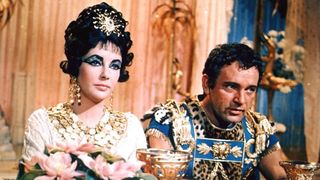
Cleopatra (1963)
The Movie: The Queen of Egypt, coming at'cha in the form of Elizabeth Taylor and as much bling as Hollywood could throw at it.
The Risk: An accountant's nightmare, the initial budget of $2 million skyrocketed to $44 million - it's still one of the most expensive films ever made. And who thought introducing Taylor to Richard Burton was a good idea?
Did It Pay Off?: Eventually. Despite being America's highest grossing film that year, it took years of worldwide sales and TV rights just to break even. As for Taylor and Burton, it was the beginning of the most turbulent, good/bad love story in Hollywood.
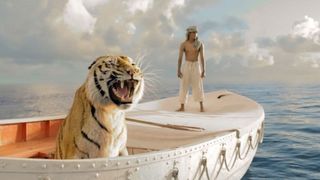
Life Of Pi (2012)
The Movie: Yann Martel's Booker-winning novel about a boy adrift at sea with a tiger for company has been brought to the screen by Ang Lee.
The Risk: How the hell do you show this convincingly? The roll call of directors who walked away in the belief that the story couldn't be filmed includes M. Night Shyamalan, Alfonso Cuaron and Jean-Pierre Jeunet.
Did It Pay Off?: Even by Lee's standards, he's pulled off a rare double here, achieving both box office success ($500 million and counting) and loads of awards.
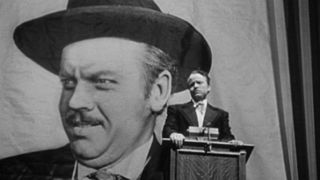
Citizen Kane (1941)
The Movie: Radio wunderkind Orson Welles arrived in Hollywood to tell the rise and fall of a newspaper mogul and his sled.
The Risk: RKO was so eager to bring Welles into movies that they granted him full creative control. The director took advantage by making a thinly veiled attack on one of the most powerful men in America, William Randolph Hearst. Perhaps the studio should have read the script.
Did It Pay Off?: Hearst's campaign against the film arguably cost Welles at the Oscars, with a solitary gong for Best Screenplay. History has been kinder - between 1962 and 2012, it was unbeatable as Sight and Sound critics' Best Film of All Time.
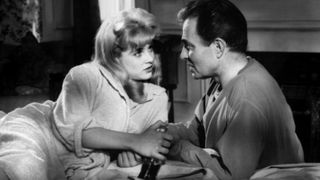
Lolita (1962)
The Movie: Vladimir Nabokov's novel about a paedophile's lust for his step-daughter scandalised America... and then Stanley Kubrick announced he was filming it.
The Risk: "How did they ever make a movie of Lolita?" screamed the posters. Even altering the age of underage lover Dolores Haze didn't stop Kubrick tussling with the MPAA. Meanwhile, the financiers required that this most American of road movies had to be shot in... Britain.
Did It Pay Off?: Lolita's success was the turning point after which Kubrick never looked back. Not only would he demand creative control in future, but he stayed in Britain for the rest of his career.
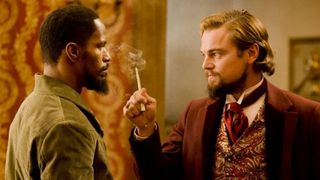
Django Unchained (2012)
The Movie: Quentin Tarantino continues his mission to tackle history's most controversial, hot-button topics. This time: slavery.
The Risk: Could QT's flippant, cartoonish style do justice to America's bleakest period? Spike Lee didn't think so, refusing even to see the film on the grounds that "it's disrespectful to my ancestors."
Did It Pay Off?: Audiences didn't share Lee's concerns. Nor did the voters of the Golden Globes and the BAFTAs. Will Oscar follow suit?
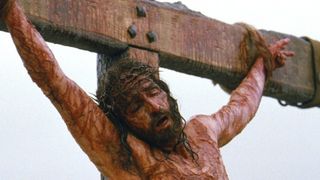
The Passion Of The Christ (2004)
The Movie: Mel Gibson tells the story of Jesus' final days... in Aramaic.
The Risk: When nobody in Hollywood would touch the project, Gibson financed the film himself. The plan was to target an audience of evangelical Christians; easier said than done when he was depicting Christ's scourging and crucifixion with more gore than Saw .
Did It Pay Off?: Never underestimate America's religious heartland, whose passion for Gibson's project set a still-unbeaten record for the highest grossing R-certificate movie.
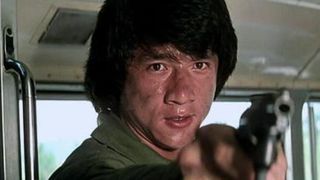
Police Story (1985)
The Movie: Jackie Chan plays Inspector Chan, whose dogged pursuit of a drug lord sees him hanging from a bus by an umbrella and sliding down a lightbulb-festooned pole.
The Risk: Frankly, we could have chosen any of Chan's peak-period Hong Kong movies because of the star's fearless attitude towards life-threatening stunts.
Did It Pay Off?: Chan suffered second-degree burns doing the pole stunt, but earned Best Picture and Best Action Choreography at the prestigious Hong Kong Film Awards. Today, it's regarded as the quintessential Jackie Chan movie.
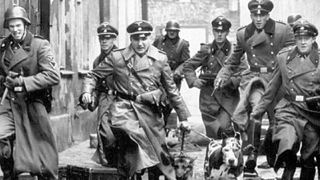
Schindler's List (1993)
The Movie: Steven Spielberg drops the blockbuster posturing to make a sober, monochrome biopic about the reluctant Nazi who decided to save 1,000 Jews from the Holocaust.
The Risk: Could the guy behind Jaws and E.T. tackle one of history's most abhorrent events? Specifically, could Spielberg do justice to the material while he was still busy editing Jurassic Park ?
Did It Pay Off?: How did anybody ever doubt him? Not only did Schindler's List silence the critics, educate a new generation in the horrors of WWII and win a slew of Oscars, it did so even as Jurassic Park raised the bar for more traditional Spielbergian entertainment.
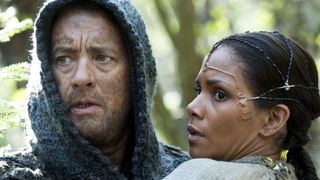
Cloud Atlas (20112)
The Movie: Adaptation of David Mitchell's time-straddling colossus of a novel, which stacks six stories (from 19th century seafaring adventure to post-apocalyptic sci-fi) like Russian dolls.
The Risk: How do you get across the interconnectedness of the novel? No fewer than three director (Lana and Andy Wachowski, and Tom Tykwer) have joined forces to devise an unusual approach to casting in which big names (Tom Hanks, Halle Berry, Hugh Grant) play multiple roles regardless of ethnicity or gender.
Did It Pay Off?: A polarised critical response, which saw it ride high on Best and Worst of the Year lists. Judge for yourself when it's released on Friday.
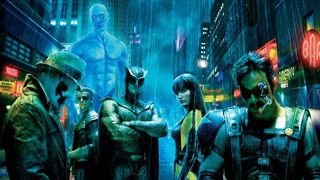
Watchmen (2009)
The Movie: The Hamlet of graphic novels added socio-political subtexts and headscratching meta-narrative to the superhero genre. Studios circled Alan Moore's classic for years before finally bringing it to the screen.
The Risk: Several visionary directors - Terry Gilliam, Darren Aronofsky, Paul Greengrass -bailed on the project because they couldn't figure out how to translate the comic's nuances to the big screen. Enter Zack Snyder: "let's just film the book!"
Did It Pay Off?: Faithful to the point of feeling strait-jacketed, the film confounded neophytes and frustrated fanboys, but - thanks to the source material - it remains amongst the most startlingly ambitious of modern superhero movies.

Irreversible (2002)
The Movie: Gaspar Noe's revenge-rape film explores the futility of existence by showing its graphic, horrific chain of events in reverse.
The Risk: With not one but two landmarks in unflinching screen violence, both frontloaded into the film's early sequences, Noe dared audiences and censors alike. Would anybody stay in their seats long enough to see the happy beginning?
Did It Pay Off?: Noe cleverly shot the film in long, impossible-to-edit takes, meaning that censors had little choice but to surrender to the shock value.
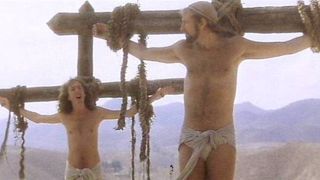
Life Of Brian (1979)
The Movie: The Monty Python team takes on organised religion, from the Judean People's Front to the People's Front of Judea.
The Risk: The Pythons took great pains to show that Brian explicitly wasn't Jesus - indeed, that's the whole point - but would Christian pressure groups get the gag?
Did It Pay Off?: Thirty-nine UK local authorities banned the film, while John Cleese and Michael Palin had to take to the airwaves to plead their case. Still, the dissenters couldn't dent the reputation of one of cinema's greatest comedies.
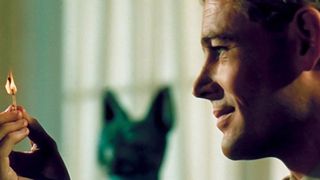
Lawrence Of Arabia (1962)
The Movie: David Lean's WWI epic sees Peter O'Toole's T.E. Lawrence unite the Arab tribes against the Turks, over four hours of retina-scorching desert spectacle.
The Risk: Buoyant after the success of The Bridge On The River Kwai , Lean went for it with extensive location shooting in inhospitable terrain, and the gamble of casting virtual unknown O'Toole in the central scene.
Did It Pay Off?: As the longest ever Best Picture winner, the benchmark for all subsequent big-screen epics and the launchpad for O'Toole's long career, Lean's hunches proved sound.
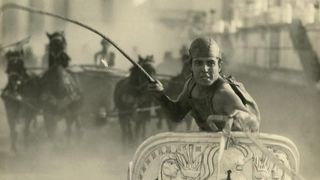
Ben Hur (1925)
The Movie: The second screen version of Lew Wallace's Biblical epic raised the bar for silent era extravagance.
The Risk: The most costly film of the silent era, MGM threw millions at the screen. Even then, they couldn't stop fights amongst the Italian extras, the death of a stuntman and several horses, or the entire reshooting of the chariot race after the initial set proved unsuitable.
Did It Pay Off?: Despite being a huge hit, it required a re-release before the film turned a profit. Its legacy lives on, notably because the famous 1959 remake pretty much copied the chariot race sequence shot-for-shot.
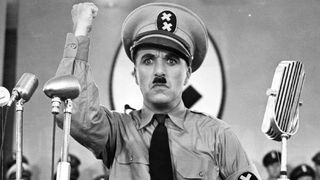
The Great Dictator (1940)
The Movie: Charlie Chaplin writes, directs and stars as both fascist dictator Adenoid Hynkel and his lookalike, a Jewish barber.
The Risk: Hollywood preferred to keep politics out of its comedies, yet Chaplin - independently wealthy - had no such qualms about taking on the tyranny of Hitler at a time when America was still officially neutral.
Did It Pay Off?: It became Chaplin's highest grossing film and a landmark in screen satire, although Chaplin later admitted that - had he known the full extent of the Holocaust - he wouldn't have been so flippant.
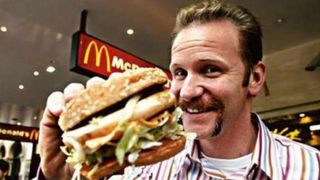
Super Size Me (2004)
The Movie: Morgan Spurlock makes a documentary about a crazy guy who decides to eat only McDonald's for a month. In the lead role: Morgan Spurlock.
The Risk: How bad for your health can it be? Mood swings, a loss of libido and a 13% body mass increase that left Spurlock's doctors gnashing their teeth in frustration at being ignored.
Did It Pay Off?: Fourteen months later, after he'd lost all the weight he put on, Spurlock had a hit and a career making high-concept documentaries.
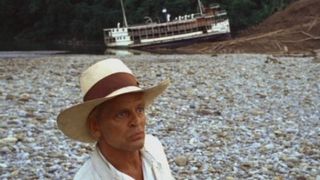
Fitzcarraldo (1982)
The Movie: Klaus Kinski dreams of building an opera house in the Amazon. That's nothing compared to what Werner Herzog dreams.
The Risk: The film's central sequence required the lugging of a 320-ton paddle steamer over a hill. Easy, peasy with CGI. Except this was 1982 and Herzog fancied doing it for real.
Did It Pay Off?: The achievement is a benchmark, unlikely to be repeated, for ignoring health and safety regulations in the hope of capturing something incredible on film.
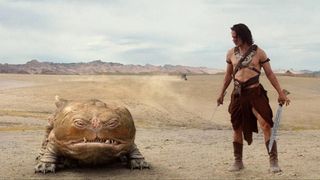
John Carter (2012)
The Movie: Pixar genius Andrew Stanton switched to live action with a sci-fi epic based on Edgar Rice Burroughs' 100-year-old genre classic.
The Risk: Would audiences used to a century of Burroughs' imitators ( Star Wars , Avatar ) accept Carter as the original deal or see it as a knock-off? Studio marketers hedged their bets by hiding the story's nature by cutting down the title from the first choice, John Carter Of Mars .
Did It Pay Off?: Nope. At an estimated budget of $250 million, a $282 million simply wasn't enough, leading to the resignation of Disney Studios boss Rich Ross.
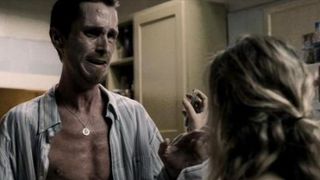
The Machinist (2004)
The Movie: Brad Anderson's psychological thriller is notable for Christian Bale's immersive, beyond-the-call-of-duty performance as emaciated insomniac Trevor Reznik.
The Risk: Bale's daily diet was one cup of black coffee and either an apple or a can of tuna, en route to a near-health threatening 120 lbs.
Did It Pay Off?: Bale's shocking appearance is one of the Noughties' greatest acting coups, all the more impressive because he quickly bulked back up for Batman Begins .
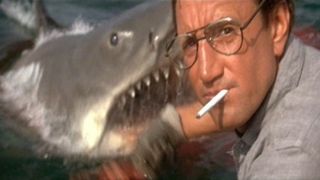
Jaws (1975)
The Movie: Three men on a boat. Shark wants in.
The Risk: A rookie director, a testing off-shore shoot and a malfunctioning mechanical star. What could go right?
Did It Pay Off?: Clever editing and Spielberg's directorial flair combined to reduce the risk - i.e. the shark's visibility - to revolutionise blockbuster filmmaking and studio expectations of box office receipts.
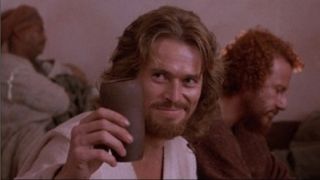
The Last Temptation Of Christ (1988)
The Movie: Nikos Kazantzakis' novel about a very human Jesus was a favourite of devout Catholic Martin Scorsese, who spent much of the 1980s attempting to get his dream project off the ground.
The Risk: Originally set for production in 1983 with Aidan Quinn as Christ, Paramount changed its mind after receiving protest letters from religious organisations. Given a plot that includes Satan tempting Christ with visions of having sex with Mary Magdalene, it's not difficult to see why many were angry.
Did It Pay Off?: Scorsese weathered a storm that climaxed in several people being seriously burnt after a Paris cinema was firebombed. Nowadays, the film is seen as one of the finest cinematic studies of the life of Christ.
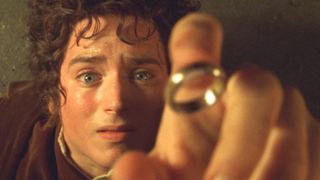
The Lord Of The Rings (2001-3)
The Movie: Peter Jackson tackled all three volumes of J.R.R. Tolkien's fantasy epic in a major project that gambled on shooting the entire trilogy back-to-back before the first film was released.
The Risk: A rare case of a project getting riskier as it went along. Miramax baulked at the prospect of making only two films; when Jackson refused to trim his ambition to a single film, New Line stumped up $270 million to do it properly.
Did It Pay Off?: And how. Nearly three billion dollars in combined global box office, and 17 Oscars including Best Picture for The Return Of The King .
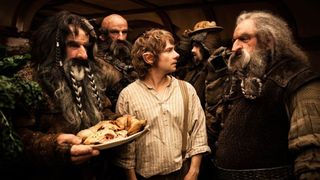
The Hobbit: An Unexpected Journey (2012)
The Movie: Not content with having brought Middle Earth to life, Peter Jackson has returned to film a 'prequel' trilogy based on Tolkien's original children's story.
The Risk: After years of legal wrangling and a false start under Guillermo Del Toro's direction, Jackson had his work cut out. His solution? Make things even more difficult by expanding one book to three films, and then shooting in a revolutionary High Frame Rate of 48 frames per second.
Did It Pay Off?: Part One has been a sizeable hit commercially, but the jury is out on HFR, with some critics suggesting that, rather than providing greater immersion into a cinematic world, it just looks like bad television.
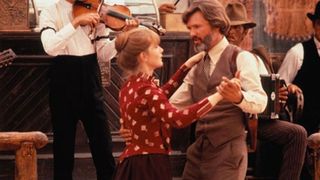
Heaven's Gate (1980)
The Movie: Michael Cimino, fresh off his Oscar success for The Deer Hunter , persuades United Artists to bankroll his Western epic about a land dispute.
The Risk: Granting creative control and near unlimited funds to a perfectionist director. After six days, Cimino was five days behind schedule. It got worse after that.
Did It Pay Off?: United Artists was nearly bankrupted, Cimino's career never recovered, and nobody went to see it. That said, it's undergone something of a re-evaluation in recent years.
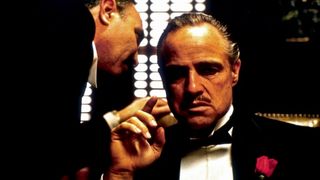
The Godfather (1972)
The Movie: Mario Puzo's Mafia potboiler was Paramount's big hope for a hit, if only they could find the right stars and director.
The Risk: Producer Robert Evans pushed for Francis Ford Coppola, not the studio's preferred choice as director. And then once he was in, Coppola pushed for unknowns (Al Pacino) and washed-up, troublesome stars (Marlon Brando) in the lead roles, giving Paramount headaches and heartburn.
Did It Pay Off?: As William Goldman famously says about Hollywood, nobody knows anything. Audiences flocked to Coppola's family-sized epic, the Academy gave it Best Picture and two sequels (one classic, one underrated) followed.
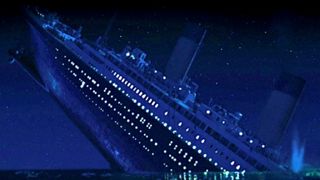
Titanic (1997)
The Movie: A labour of love for James Cameron, whose desire to bring the tragedy of the doomed liner to life became the 1990s' ultimate epic.
The Risk: In a word, cost. Cameron's obsession caused him to shoot extensive underwater footage of the real-life wreck, build a near-full scale replica for filming and then augment everything with unprecedented use of CGI. It took two studios - Paramount and 20th Century Fox - to share the burden of financing the film.
Did It Pay Off?: Cameron's canny blend of spectacle and romance ensured that audiences kept coming back for more, giving Titanic the honour of being the first film ever to reach $1 billion in global box office receipts.
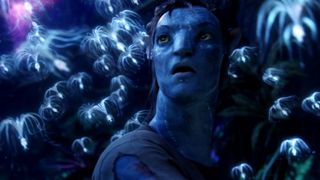
Avatar (2009)
The Movie: James Cameron spent most of the Noughties immersed in building a new world for cinema, in which motion-capture, 3D and giant Smurfs would change everything.
The Risk: Cameron's brave new world required new forms of filming (a virtual camera that animated actors in real-life) and exhibition (a fledgling 3D system that needed extensive investment from cinemas worldwide to be ready in time) - and with no prior fanbase for the material, there was no guarantee of an audience.
Did It Pay Off?: Midas man Cameron did it again, one-upping Titanic to create the first $2 billion movie despite a critical backlash that accused his story of being derivative and hackneyed.
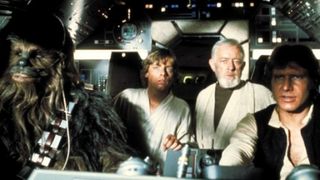
Star Wars (1977)
The Movie: A long time ago - the 1970s - in a galaxy far, far away - Hollywood - a kid called George decided to change movies forever.
The Risk: Studios saw only a B-movie, and didn't understand why Lucas was cutting old WWII footage into the action set-pieces. Lucas, meanwhile, had to create an FX house from scratch to fill in the gaps. Such was his faith, though, that he deferred payment in lieu of merchandising rights.
Did It Pay Off?: No other film has changed popular culture to such a degree, not least because of all those wonderful toys. The Force is strong with this one.
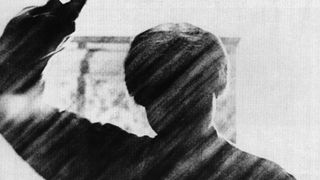
Psycho (1960)
The Movie: Alfred Hitchcock's dark adaptation of Robert Bloch's murder story was a no-go for Paramount, causing the director to shoot (for Universal) on a tight budget with a TV crew, and deferred payment in exchange for 60% ownership of the negative.
The Risk: Never mind the shocking violence, the biggest risk was killing off Janet Leigh's character halfway through the film - an innovation that caused Hitchcock to demand that nobody be admitted into cinemas after the film had started.
Did It Pay Off?: The restrictions on admission helped to build the film's word-of-mouth, resulting in the director's biggest ever hit and one of Hollywood's most iconic films. Hitchcock's gamble also made him incredibly wealthy.
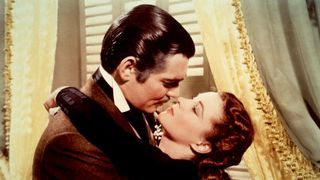
Gone With The Wind (1939)
The Movie: David O. Selznick dreamed of adapting Margaret Mitchel's novel of Civil War romance for the big screen. So he did.
The Risk: Selznick spent $50,000 on the rights to the novel, and spared no expense getting it right. Casting alone took two years before Vivien Leigh (a star in Britain but unknown in the States) was confirmed as Scarlett O'Hara. And then it took a conveyor belt of three directors to call 'Action' on set.
Did It Pay Off?: All producers who think big point to this as their precedent - adjusted for inflation, no film has made as much money.
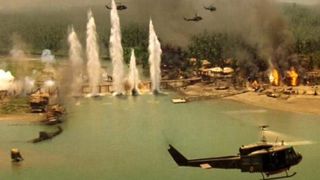
Apocalypse Now (1979)
The Movie: Francis Coppola's war epic transposed Conrad's Heart Of Darkness to Vietnam, where the tale of a madman loose in the jungle was reflected with Wagner-soundtracked helicopter assaults and Playboy bunny stage shows.
The Risk: Orson Welles and David Lean had tried and failed to make adaptations of the novella. With Martin Sheen suffering a heart attack, a typhoon destroying the set and Marlon Brando showing up without reading the script, Coppola might well have had second thoughts.
Did It Pay Off?: A Palme D'Or, two Oscars and a reputation for being the greatest war film ever made justified Coppola's admission that "little by little we went insane."

